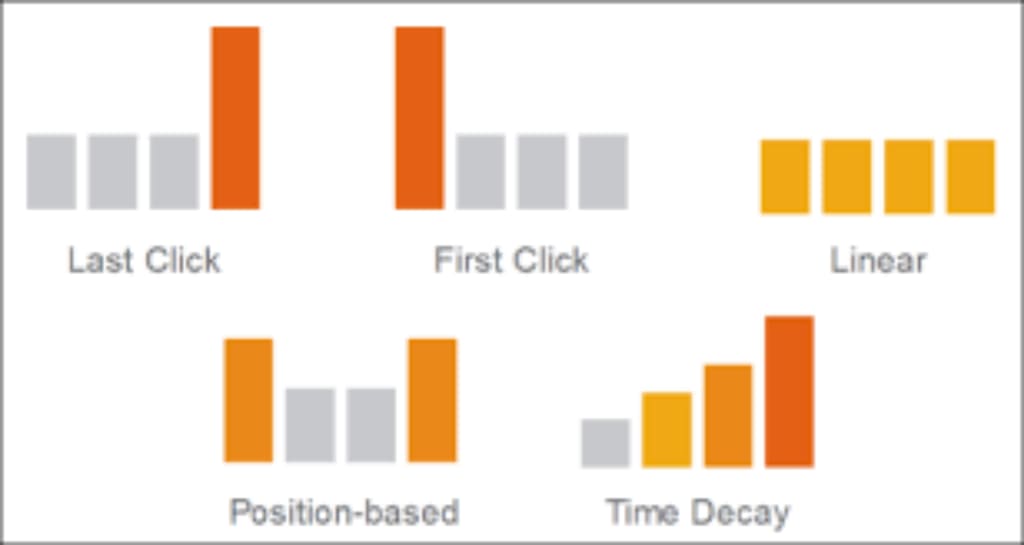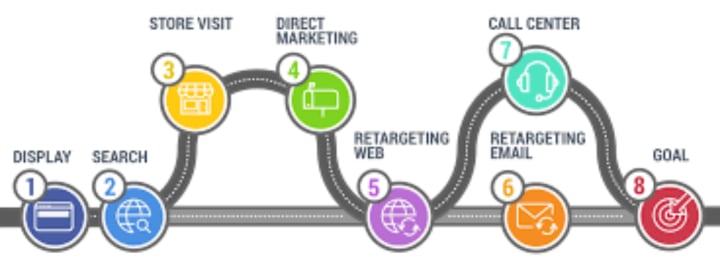First and last click attribution..
You must know it..

First click attribution is a concept in affiliate marketing that assigns credit for a conversion or sale to the first interaction a customer has with an affiliate marketing campaign. In this model, the affiliate who generates the initial click that leads to the customer's purchase receives the full credit for the conversion. The first click is considered the most influential touchpoint in the customer's journey as it introduces them to the product or service.
The main advantage of first click attribution is its ability to identify the affiliate who initially brought the customer into the sales funnel. By crediting the first click, marketers can acknowledge the affiliate's role in creating awareness and capturing the customer's interest. This model aligns with the idea that the first interaction plays a crucial role in shaping the customer's perception and decision-making process.
Implementing first click attribution allows marketers to understand the effectiveness of their affiliates in driving initial customer engagement. It provides insights into which affiliates are successful in generating awareness and attracting new prospects to the business. By identifying the most influential affiliates at the beginning of the customer journey, marketers can allocate resources effectively and nurture those partnerships to maximize results.
However, first click attribution does have its limitations. One challenge is that it may overlook the impact of subsequent touchpoints in the customer journey. While the first click is significant, customers often go through multiple interactions with different affiliates, channels, or marketing efforts before making a purchase. Ignoring these later touchpoints can result in undervaluing the contributions of affiliates who play a role in influencing the customer's decision closer to the point of conversion.
Another limitation is that first click attribution may not be suitable for all types of products or services. In some cases, customers may engage with multiple affiliates throughout their journey, and each interaction could play a significant role in their decision-making process. For complex or high-ticket items, the cumulative impact of multiple touchpoints may outweigh the influence of the first click alone. In such scenarios, alternative attribution models, such as multi-touch attribution, may be more appropriate.
To effectively implement first click attribution, accurate tracking and data analysis are crucial. Marketers need to employ reliable tracking mechanisms to identify and attribute the first click accurately. This may involve using unique referral links or employing sophisticated tracking tools to capture and analyze customer behavior across multiple touchpoints. Understanding the customer's journey from the first click to the final conversion allows marketers to optimize their campaigns, make data-driven decisions, and allocate resources effectively.
Several affiliate marketing campaigns have successfully implemented first click attribution. For instance, a clothing brand might have affiliates who create engaging blog posts or social media content that introduces customers to their products. By attributing conversions to the first click, the brand can identify the affiliates who effectively drive initial interest and allocate resources accordingly. This model encourages affiliates to focus on generating awareness and reaching new audiences, ultimately leading to increased sales.
READY TO START EARNING SERIOUS MONEY WITH AFFILIATE MARKETING..? OUR COURSE WILL SHOW YOU HOW – ENROLL TODAY.. https://tinyurl.com/65ewcrxu

Last click attribution is a concept in affiliate marketing that assigns credit for a conversion or sale to the final interaction a customer has with an affiliate marketing campaign. In this model, the affiliate whose link or advertisement is clicked last before the customer completes a purchase receives the full credit for the conversion. The last click is considered the most critical touchpoint, as it directly leads to the conversion.
One of the key advantages of last click attribution is its simplicity and ease of implementation. Marketers can easily track the last click and attribute the conversion to the affiliate responsible for that specific interaction. This model provides a clear and straightforward method for determining the impact of affiliates on driving sales. It allows marketers to identify the most effective affiliates in terms of directly influencing customer decisions and generating conversions.
Last click attribution is particularly suitable for scenarios where the customer's decision-making process is short and straightforward. For example, in e-commerce transactions involving low-value products or impulse purchases, the final touchpoint can heavily influence the customer's decision. By focusing on the last click, marketers can optimize their campaigns to target affiliates who excel at capturing customers at the point of purchase and driving immediate conversions.
However, last click attribution has some limitations that need to be considered. One challenge is that it neglects the contributions of earlier touchpoints in the customer journey. Customers often engage with multiple affiliates and marketing channels before reaching the final click. Disregarding these earlier touchpoints can lead to undervaluing the role of affiliates who play a significant part in creating awareness, generating interest, and nurturing the customer's intent to purchase.
Another limitation is that last click attribution can create a hyper-competitive environment among affiliates, leading to a race to be the last touchpoint. Affiliates may focus solely on placing their links or advertisements at the final stage of the customer journey, potentially neglecting the earlier stages where valuable interactions take place. This narrow focus on the last click can limit the effectiveness of overall marketing efforts and overlook the importance of building long-term relationships with customers.
To address these limitations, marketers can explore alternative attribution models that consider the contributions of multiple touchpoints. Multi-touch attribution models allocate credit to various touchpoints along the customer journey, providing a more comprehensive understanding of the customer's decision-making process. By adopting multi-touch attribution, marketers can gain insights into the cumulative impact of different affiliates and marketing channels and better optimize their campaigns to maximize results.
Implementing last click attribution requires accurate tracking and analysis of customer behavior. Marketers need to ensure that their tracking mechanisms can reliably capture and attribute the last click to the appropriate affiliate. This may involve employing advanced tracking tools, using cookies or unique referral links, and integrating with affiliate networks to accurately track conversions.
Several affiliate marketing campaigns have successfully utilized last click attribution. For instance, in the travel industry, affiliates who provide price comparison or deal aggregator services often benefit from last click attribution. Customers typically visit these platforms just before making a booking, making the last click influential in their decision. By attributing conversions to the last click, marketers can identify and reward affiliates who excel at capturing customers at the final stage of the booking process.
READY TO START EARNING SERIOUS MONEY WITH AFFILIATE MARKETING..? OUR COURSE WILL SHOW YOU HOW – ENROLL TODAY.. https://tinyurl.com/65ewcrxu
In conclusion, the first and last click attribution models in affiliate marketing offer different perspectives on assigning credit for conversions. First click attribution emphasizes the initial touchpoint's role in introducing customers to a product or service, while last click attribution focuses on the final interaction that directly leads to the conversion. Both models have their advantages and limitations, with first click attribution highlighting the importance of generating awareness and attracting new prospects, and last click attribution simplifying the tracking process and pinpointing affiliates who drive immediate conversions. Marketers should consider the nature of their products or services and implement accurate tracking mechanisms to make informed decisions about attribution in their affiliate marketing strategies.






Comments
There are no comments for this story
Be the first to respond and start the conversation.